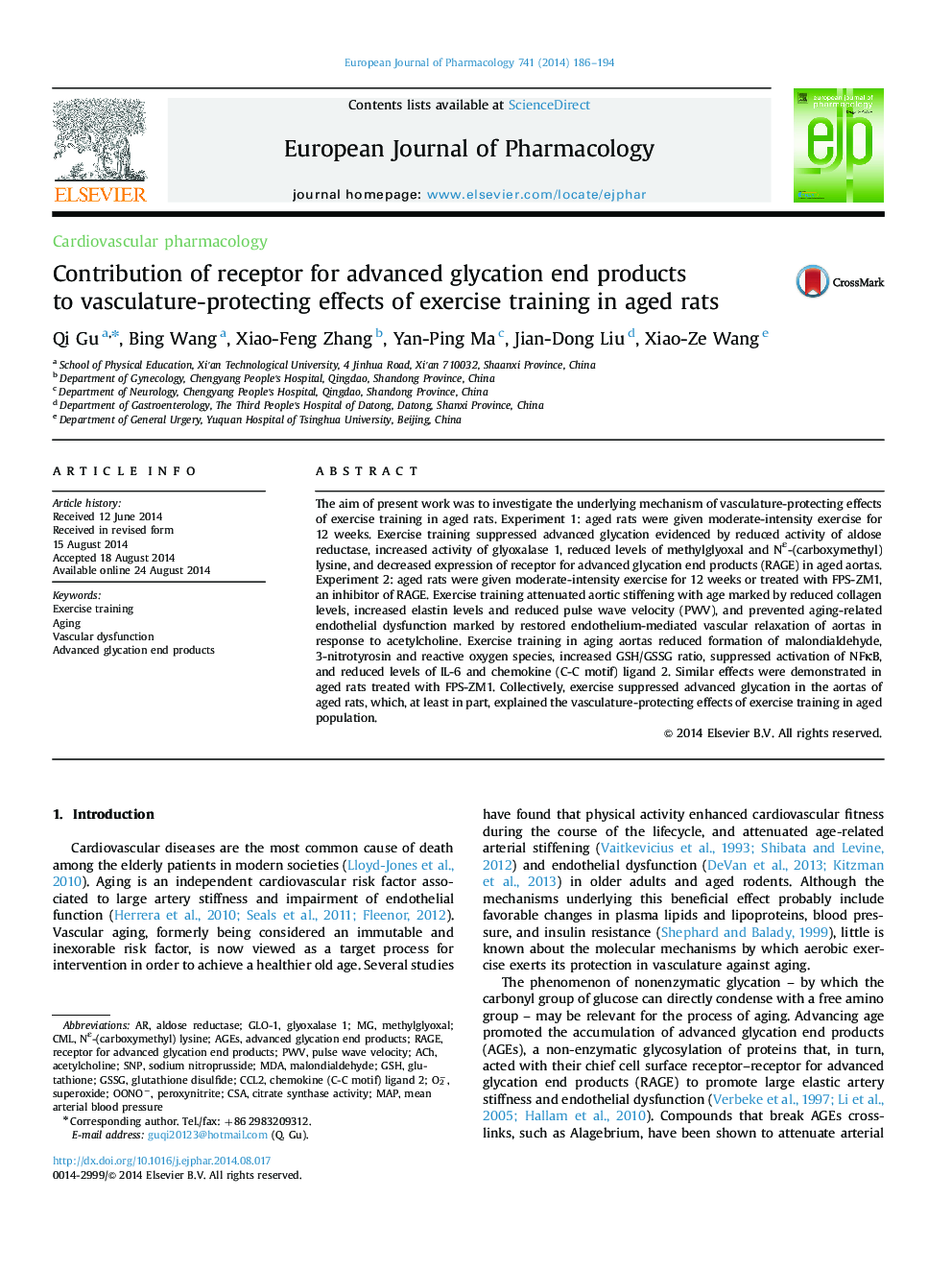| Article ID | Journal | Published Year | Pages | File Type |
|---|---|---|---|---|
| 5827648 | European Journal of Pharmacology | 2014 | 9 Pages |
The aim of present work was to investigate the underlying mechanism of vasculature-protecting effects of exercise training in aged rats. Experiment 1: aged rats were given moderate-intensity exercise for 12 weeks. Exercise training suppressed advanced glycation evidenced by reduced activity of aldose reductase, increased activity of glyoxalase 1, reduced levels of methylglyoxal and Nε-(carboxymethyl) lysine, and decreased expression of receptor for advanced glycation end products (RAGE) in aged aortas. Experiment 2: aged rats were given moderate-intensity exercise for 12 weeks or treated with FPS-ZM1, an inhibitor of RAGE. Exercise training attenuated aortic stiffening with age marked by reduced collagen levels, increased elastin levels and reduced pulse wave velocity (PWV), and prevented aging-related endothelial dysfunction marked by restored endothelium-mediated vascular relaxation of aortas in response to acetylcholine. Exercise training in aging aortas reduced formation of malondialdehyde, 3-nitrotyrosin and reactive oxygen species, increased GSH/GSSG ratio, suppressed activation of NFκB, and reduced levels of IL-6 and chemokine (C-C motif) ligand 2. Similar effects were demonstrated in aged rats treated with FPS-ZM1. Collectively, exercise suppressed advanced glycation in the aortas of aged rats, which, at least in part, explained the vasculature-protecting effects of exercise training in aged population.
